Introduction
What do we know about Poland? Quite a lot! What do we know about its history during World War II? Ultimately, we know that it was one of the first countries invaded by Hitler and that it fell in a matter of weeks. We also know that the Polish Resistance ‘ lesser known that the French Resistance ‘ had some small victories and were actively supported by the allies as part of the war effort. Here is a list of ten of the most interesting facts about Poland’s WWII history.
1. ENIGMA

Though the British secret services at Bletchley Park were largely credited with breaking the ENIGMA Code, they may have taken much longer to break the code had it not been for the efforts of their Polish counterparts. As the Nazi war machine trundled into Poland, the information was transmitted to Britain so they could carry on the work started by the country that was now under occupation. Even Winston Churchill said ‘It was thanks to Ultra that we won the war.’
2. Spy Network
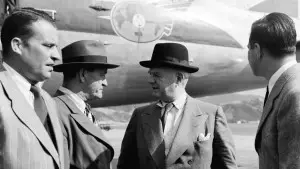
Churchill knew that espionage and counterespionage was vital to the war efforts. Poland’s long history of mistrust with Germany worked in the favour of the allied power, even before war was on the horizon. The spy network went to ground following the invasion and spread out all over free Europe ‘ most heading to Britain to pass information to Churchill and the military leaders. The Polish spy network in Germany and Poland were also fundamental in finding wreckage from V2 rockets and passing it to the allies.
3. Concentration Camp Concentration
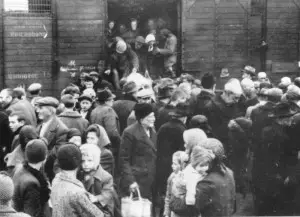
It is often a surprise for people to learn that the largest concentration of Concentration Camps and Extermination Camps were not in the forests of Germany, but in Poland. This was for two reasons: firstly, there were a larger number of Jews in Poland and secondly, the Nazi regime wanted German Jews out of Germany as quickly as possible. Auschwitz-Birkenau was just over the border, Kraków-PÃ…’šaszów (Oskar Schindler’s camp) was named after the two cities it was near. The largest POW camps were also in Poland.
4. A Lieutenant Invented the Mine Detector

Under the threat of invasion from Nazi Germany, the British officials in charge of national defence placed thousands of mines along the coast and on the beaches in anticipation of troops landing on foot. Lieutenant Jozef Stanislaw’s device was so successful in the effort to remove mines from British beaches that it was also used in North Africa, becoming integral to finding Nazi mines in the sand dunes there. Each mind detector has built on the technology that he invented and he was not an accomplished scientist or even a high-ranking officer for that matter.
5. Russia’s Holocaust

Hitler invaded from the west and destroyed the armies and defensive network there. As part of an alliance, Stalin agreed to invade the east and carry out a suppression just as brutal as the Nazis’. It is estimated that Soviet Russia killed just as many soldiers, officers and Polish officials the Nazis did. Eventually, Hitler would turn on Stalin and the Russians would switch sides. As part of Hitler’s invasion of Russia, officials found thousands of bodies in an event that would go down in history as the Katyn Massacre.
6. Iran’s Influx
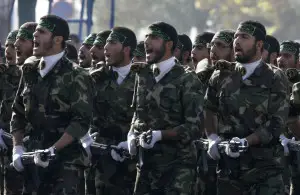
The gulags of Siberia were in some ways even harsher than the Nazis camps ‘ mostly because of the harsh weather conditions. The Poles that were sent there were freed as part of an agreement with the British to set up a Polish army to help Russia with the war effort. Their destination? Iran of all places. Some 300,000 Polish refugees made it to the Middle East, lived and died there. In Tehran today there is a poignant Catholic cemetery dedicated to those Poles.
7. Vastly Outnumbered
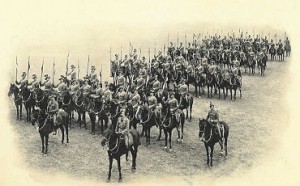
Poland’s army fell in a matter of weeks and though there wasn’t a huge disparity between the number of troops (1.8 million Germans, 1.2 million Poles). But the huge disparity comes in the available technology. Germany had over 2000 aircraft, the Poles just over 400. It gets worse. Germany had 2500 tanks (a mix of light and heavy armour), Poland just 800 but they were all light tanks and hadn’t been updated in many years. The problem was that the military of Poland was underequipped and out of date.
8. The Battle of Britain
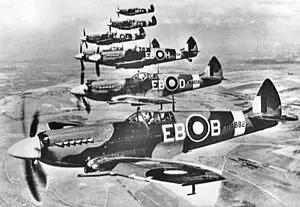
This is the name given to the biggest period of aerial combat over the skies of Britain. Yet it was pilots from Poland that formed one of the most successful aerial squadrons throughout the whole period. Dywizjon 303 consisted overwhelmingly of Polish pilots (though there were a couple of Brits and a Canadian) and during The Battle of Britain the squadron shot down 93 German aircraft. They were equipped with Hawker Hurricanes, some of the most advanced fighters of the time. Polish nationals made up the majority of non-British pilots fighting for the RAF during the campaign.
9. Warsaw Uprisings
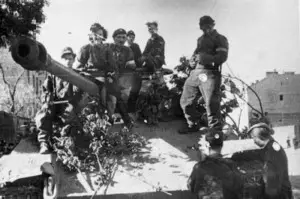
This should have led to Poland fighting back and finally driving Nazi Germany out of the country but only Stalin’s refusal to act on the agreed plan with the Polish Resistance and the British forces meant that what was supposed to be a victorious uprising, ended up being the tragedy of Poland’s history during WWII and threatened to tear the allied powers apart. 85% of the city was destroyed, Churchill and Stalin were at loggerheads, Stalin refused to allow US forces anywhere near his territory and 200,000 Warsaw residents were killed or injured as a result.
10. Hell Didn’t Give Up
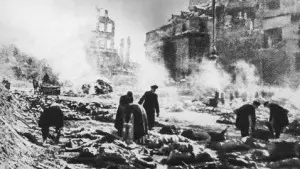
Not the real Hell of course. Today it is a fishing village but during World War II it was the main naval base of the country. It continued on, refusing to give up even after the national government in Warsaw had capitulated. It held out until 1939 and even then, it became a centre for partisans and the resistance movement.
Conclusion
Today, Poland is a popular tourist destination in Europe and an up and coming country in the European economy. It has a rich and colourful history and has very dark memories of the Second World War when it can justifiably say that it was betrayed by Russian allies twice over. Let’s not forget the wonderful contribution that Poland made in the fight against Hitler’s war machine.









